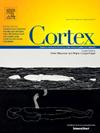分类器量化的erp启动效应与面部认知能力的关系:任务难度和潜伏期变异的贡献
IF 3.2
2区 心理学
Q1 BEHAVIORAL SCIENCES
引用次数: 0
摘要
先前的研究一致表明,面部认知能力的个体差异与重复启动引起的事件相关电位振幅变化有关,称为早期重复效应(或N250r)。然而,与后续启动效应(如N400)的关联尚不清楚,尽管这对于理解这些不同效应的认知意义至关重要。这种知识上的差距可能是由于不同的范例或延迟可变性等因素造成的。在我们最近发表的基于分类器的分析中,我们描述了试验、条件和参与者之间的潜伏期变异对启动效应的影响。在此基础上,本研究利用深层神经网络对每个参与者的分类性能作为结构方程模型的指标,探讨启动效应与面部认知能力之间的关系。我们研究了这些关系如何受到任务难度和延迟变化的影响。通过基于ride的逐步延迟校正方法,我们发现N250r与人脸认知速度之间存在显著的相关性,而N400与人脸记忆准确性之间的相关性更为密切。值得注意的是,这些关系在困难的ERP任务中明显强于简单的ERP任务。对启动和未启动条件之间的潜伏期偏移进行校正,消除了ERP振幅与面部认知能力之间的关联,表明潜伏期偏移是驱动脑-行为关系的主要因素。我们的研究结果表明,分类器量化的启动效应为面部认知中脑行为关系的建模提供了一种先进而有用的测量方法。本文章由计算机程序翻译,如有差异,请以英文原文为准。
Relationships between classifier-quantified priming effects in ERPs and face cognition abilities: Contributions of task difficulty and latency variability
Previous research has consistently shown that individual differences in face cognition abilities correlate with repetition priming-induced amplitude changes in event-related potentials, known as the early repetition effect (or N250r). However, the association with subsequent priming effects (e.g., N400) remains unclear, although this is crucial for understanding the cognitive significance of these different effects. This gap in knowledge may be due to factors such as different paradigms or latency variability. In our recently published classifier-based analysis, we described the impact of latency variability across trials, conditions, and participants on priming effects. Building on these findings, the present analysis used the classification performance of deep neural networks for each participant as an indicator in structural equation models to explore the relationships between priming effects and face cognition abilities. We investigated how these relationships were affected by task difficulty and latency variability. Through our RIDE-based stepwise latency correction method, we found a substantial association between the N250r and face cognition speed, while the N400 was more closely associated with face memory accuracy. Notably, these relationships were significantly stronger in difficult than in easy ERP tasks. Correction for latency shifts between primed and unprimed conditions eliminated the associations between ERP amplitudes and face cognition abilities, indicating that latency shift is a major factor driving brain-behavior relationships. Our results suggest that classifier-quantified priming effects provide an advanced and useful measure for modeling brain-behavior relationships in face cognition.
求助全文
通过发布文献求助,成功后即可免费获取论文全文。
去求助
来源期刊

Cortex
医学-行为科学
CiteScore
7.00
自引率
5.60%
发文量
250
审稿时长
74 days
期刊介绍:
CORTEX is an international journal devoted to the study of cognition and of the relationship between the nervous system and mental processes, particularly as these are reflected in the behaviour of patients with acquired brain lesions, normal volunteers, children with typical and atypical development, and in the activation of brain regions and systems as recorded by functional neuroimaging techniques. It was founded in 1964 by Ennio De Renzi.
 求助内容:
求助内容: 应助结果提醒方式:
应助结果提醒方式:


